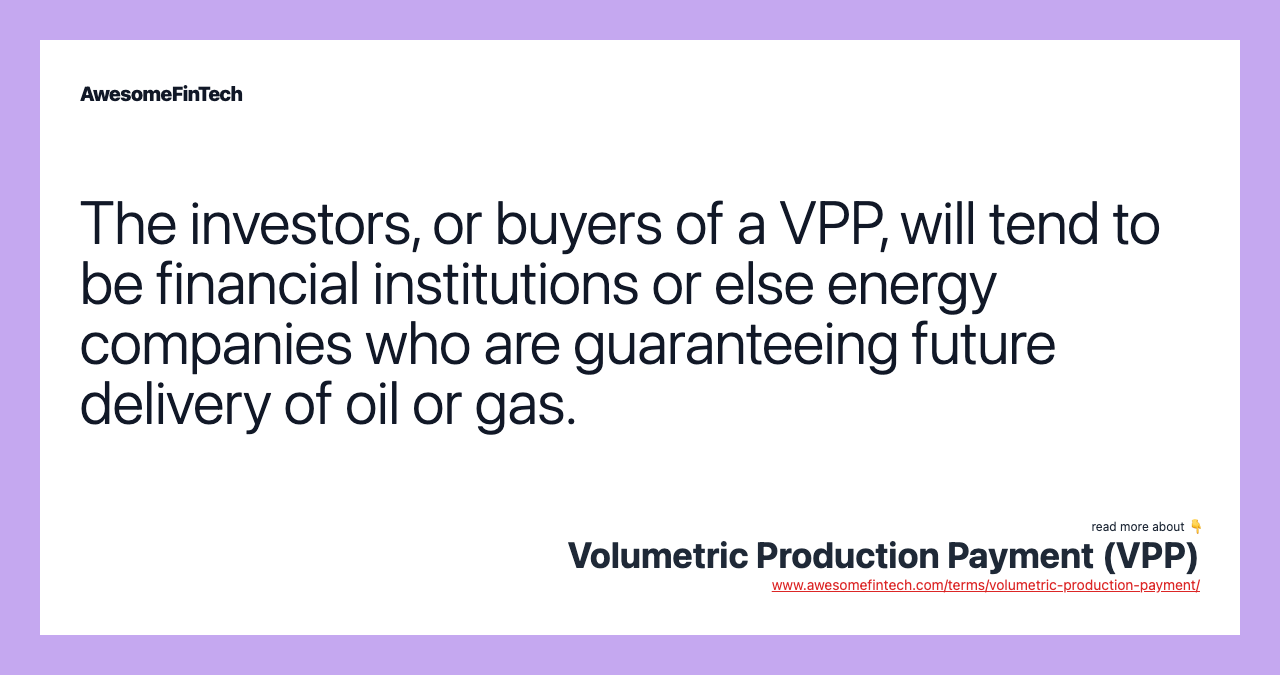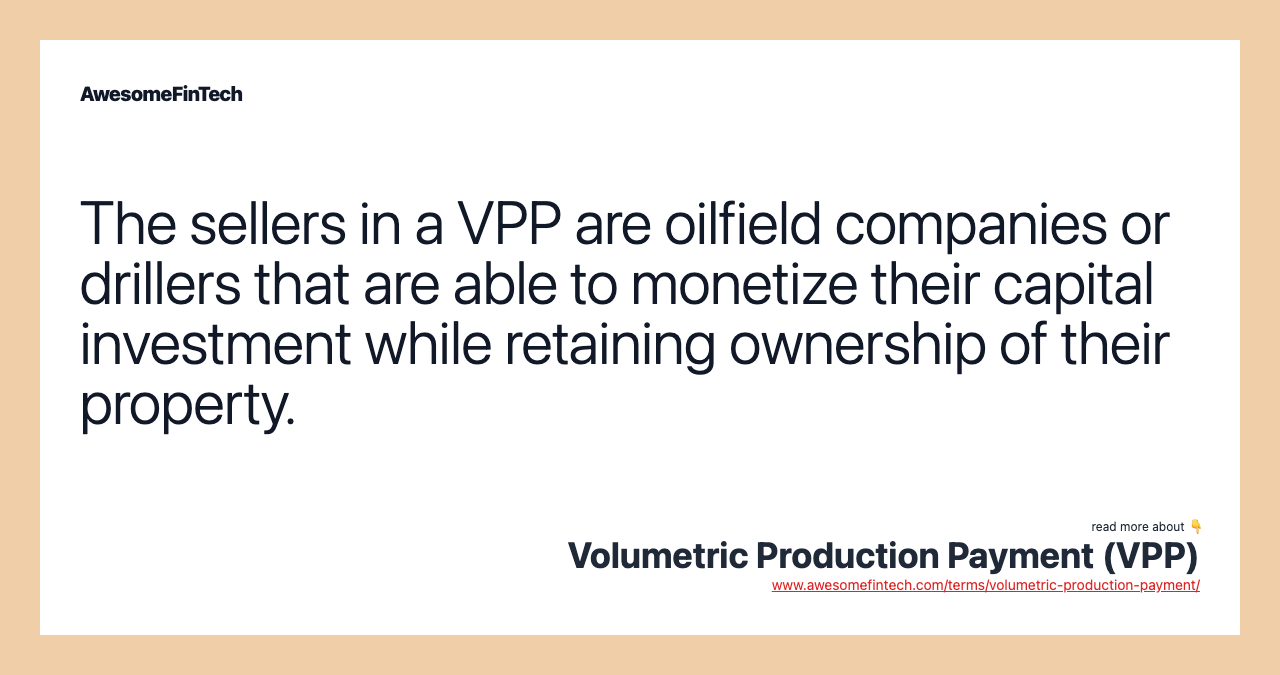Volumetric Production Payment (VPP)
Table of Contents Volumetric Production Payment Understanding VPP VPP Deal Details A Volumetric Production Payment (VPP) is a type of structured investment that involves the owner of an oil or gas interest selling or borrowing money against a specific volume of production associated with that field or property. The investor or lender receives a stated monthly quota – often in raw output, which is then marketed by the VPP buyer – or, a specified percentage of the monthly production achieved at the given property. The investors, or buyers of a VPP, will tend to be financial institutions or else energy companies who are guaranteeing future delivery of oil or gas. Volumetric production payments (VPPs) are a way to convert a portion of oil or gas production into a cash flow stream for investors.

What Is Volumetric Production Payment?
A Volumetric Production Payment (VPP) is a type of structured investment that involves the owner of an oil or gas interest selling or borrowing money against a specific volume of production associated with that field or property. The investor or lender receives a stated monthly quota – often in raw output, which is then marketed by the VPP buyer – or, a specified percentage of the monthly production achieved at the given property.
Buyers could include investment banks, hedge funds, energy companies, and insurance companies.



Understanding Volumetric Production Payment
A VPP structure is sometimes constructed as part of a pre-export financing (PFX) package. PFX takes place when a financial institution advances funds to a borrower based on proven volume of orders from buyers. The borrower, in this case, the oil producer, usually requires the funding in order to produce and supply the oil and gas. The VPP is then used to repay the borrowing under the PFX arrangement. The credit quality of PFX tends to be better than other lending because the cash flow generated from the VPP is used to repay the PFX ahead of other creditors.
The VPP buyer does not have to contribute any time or capital to the actual production of the end product. However, many investors in these types of interests will hedge their expected receivables (the volumes laid out in the contract) via the derivatives market to protect against commodity risk or otherwise lock in the expected profits.
A VPP deal allows the seller to retain full ownership of the property while monetizing some of their capital investment. This ability to "cash out" some of the value of an oil field, for example, allows the producer to invest in capital upgrades or repurchase shares. In the case where the owner of an oil and gas interest sells a specific volume production, instead of borrowing against it, this money can be used to repay other debt.
VPP Deal Details
A VPP deal is typically set to expire after a certain length of time or after a specified aggregate total volume of the commodity has been delivered. A VPP interest is considered a non-operating asset, akin to a royalty-payment or loan repayment system. Under the royalty-payment structure, if the producer can't meet the supply quota for a given month (or whatever schedule is used), the unmet portion will be made up for in the next cycle, and so on until the buyer is made financially whole. Under the loan repayment structure, failure to make a payment would be considered default.
Related terms:
Capital Investment
Capital investment is a sum acquired by a company to further its business objectives. The term also may refer to a company's acquisition of long-term assets. read more
Commodity Price Risk
Commodity price risk is price uncertainty that adversely impacts the financial results of those who both use and produce commodities. read more
Crude Oil & Investing Examples
Crude oil is a naturally occurring, unrefined petroleum product composed of hydrocarbon deposits and other organic materials. read more
Derivative
A derivative is a securitized contract whose value is dependent upon one or more underlying assets. Its price is determined by fluctuations in that asset. read more
Farmout
A farmout is the assignment of part or all of an oil, natural gas or mineral interest to a third party for development. read more
Income Property
An income property is bought or developed to earn income through renting, leasing, or price appreciation. read more
Mortgage
A mortgage is a loan typically used to buy a home or other piece of real estate for which that property then serves as collateral. read more
Non-Operating Asset
A non-operating asset is an asset that is not essential to the ongoing operations of a business but may still generate income. read more